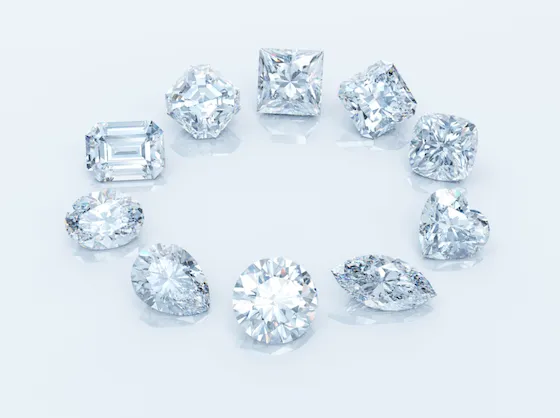In the world of luxury and elegance, diamonds #1 question have long held a captivating allure. Among various types of diamonds, lab-created diamonds are becoming increasingly popular. This article delves into the fundamental question surrounding lab-created diamonds, exploring their characteristics, benefits, and how they stack up against their natural counterparts.
What Are Lab-Created Diamonds?
Lab-created diamonds, also known as synthetic diamonds or cultured diamonds, are real diamonds that are produced in controlled environments using advanced technology. Unlike natural diamonds, which take millions of years to form under the earth’s crust, lab-created diamonds can be produced in a matter of weeks. They possess the same physical, chemical, and optical properties as natural diamonds, making them indistinguishable to the naked eye.
How Are Lab-Created Diamonds Made?
There are two primary methods for creating lab diamonds: High Pressure High Temperature (HPHT) and Chemical Vapor Deposition (CVD).
High Pressure High Temperature (HPHT) involves applying extreme heat and pressure to carbon, which causes the carbon atoms to crystallize into diamond structures. This method mimics the natural conditions under which diamonds form.
Chemical Vapor Deposition (CVD) involves placing a diamond seed in a chamber filled with carbon-rich gas. The gas is ionized, and carbon atoms bond to the seed, gradually building up layers of diamond.
Both methods produce high-quality diamonds that can be certified by gemological laboratories, ensuring their authenticity.
The Benefits of Choosing Lab-Created Diamonds
Ethical Considerations
One of the primary concerns for many consumers is the ethical implications of diamond mining. Lab-created diamonds are produced without the ethical dilemmas often associated with natural diamonds, such as human rights abuses, environmental degradation, and funding of conflict. By choosing lab-created diamonds, consumers can make a more informed and responsible choice.
Affordability
Lab-created diamonds are typically 20% to 40% less expensive than their natural counterparts. This significant price difference allows consumers to purchase larger or higher-quality stones for the same budget, making them an attractive option for couples looking to buy engagement rings or other fine jewelry.
Quality and Variety
Lab-created diamonds offer an extensive range of options, allowing consumers to choose from various shapes, sizes, and colors. These diamonds can be produced in a controlled environment, ensuring high-quality standards. Lab-created diamonds often feature fewer inclusions and greater clarity compared to many natural diamonds. This quality means consumers can find stones that perfectly match their preferences without compromising on quality.
Understanding the Market for Lab-Created Diamonds
The market for lab-created diamonds is evolving rapidly. With increasing awareness and acceptance, more consumers are opting for these alternatives. Retailers and jewelers are expanding their inventories to include lab-created options, making them more accessible to the average buyer.
As the demand for sustainable and ethical products grows, lab-created diamonds are poised to become a staple in the jewelry industry. The perception of lab-created diamonds is shifting, and they are increasingly viewed as a legitimate and appealing choice for various occasions, from engagements to anniversaries.
Addressing Common Misconceptions
Misconception 1: Lab-Created Diamonds Are Fake
A prevalent misconception is that lab-created diamonds are not real diamonds. In reality, they are chemically and structurally identical to natural diamonds. Both types of diamonds consist of carbon atoms arranged in a crystal lattice structure. The only difference lies in their origin—one is formed naturally over millions of years, while the other is created in a lab in a matter of weeks.
Misconception 2: Lab-Created Diamonds Lack Value
Another common belief is that lab-created diamonds lack value compared to natural diamonds. While it is true that lab-created diamonds are generally less expensive, they still hold significant value. Their price reflects the costs associated with production rather than their inherent worth. Many consumers appreciate the value they offer, allowing them to invest in larger or higher-quality stones.
The Future of Lab-Created Diamonds
The future of lab-created diamonds looks promising. As technology continues to advance, the production process becomes more efficient, potentially lowering costs even further. Additionally, as more people become aware of the ethical and environmental implications of their purchases, the demand for lab-created diamonds is expected to grow.
Consumers are increasingly prioritizing sustainability and ethics in their buying decisions. Lab-created diamonds provide an excellent alternative for those looking to align their values with their purchases. As societal attitudes shift and awareness increases, lab-created diamonds will likely become a mainstay in the jewelry market.
Conclusion
In summary, the question surrounding lab created diamonds is clear: they represent a sustainable, ethical, and affordable choice for consumers. With their indistinguishable qualities, they challenge the traditional views of luxury diamonds. As we move towards a more conscious society, lab-created diamonds will undoubtedly carve out a prominent place in the hearts of consumers and the jewelry industry.















